A “Bird-Brain” With Senses So Acute It Makes Them Seem Clever
Bob Humphrey | Originally published in GameKeepers: Farming for Wildlife Magazine. To subscribe, click here.
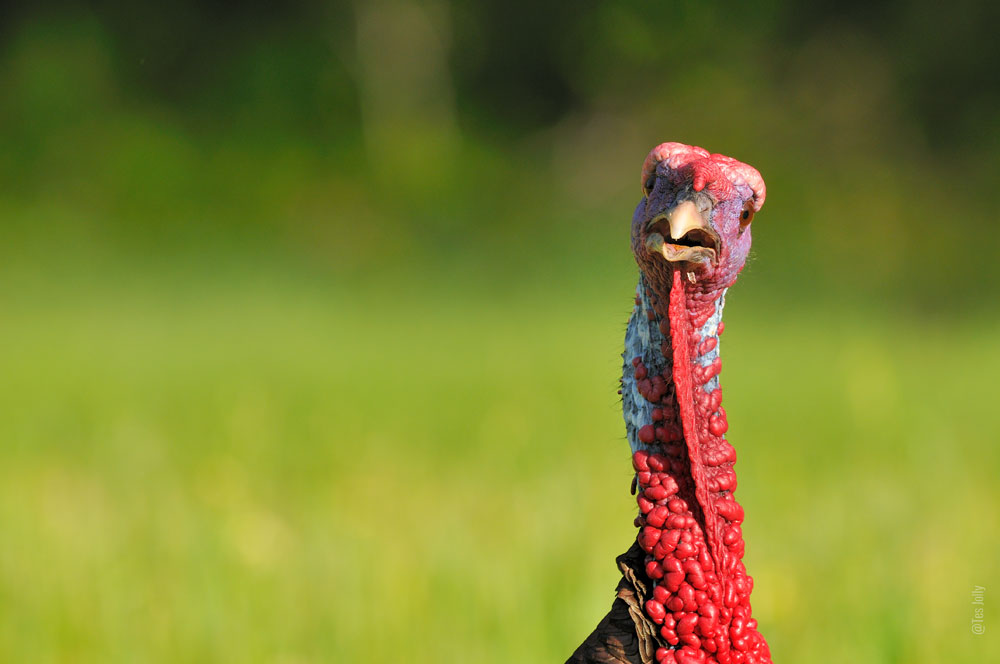
How is it that a bird with a brain the size of a walnut still manages to defeat us more often than not?
I first struck the bird from a long way off. Several loud raps on a box call elicited an obliging gobble, and several more revealed he was indeed coming our way. We quickly settled in shoulder to shoulder against the base of a large live oak as I instructed my partner to aim his left shoulder towards the bird’s direction and prop his gun up on his knee.
The bird responded aggressively for some time before characteristically going quiet. While my accomplice grew increasingly restless, I strained eyes and ears for any trace of the turkey. He didn’t hear it, but I did: the deep, resonating boom of a strutting tom, and it was close. Then I spied the tips of a tail fan just over the rise in front of us. “Don’t move. Don’t even breathe,” I whispered emphatically.
As a guide, I’ve enjoyed the pleasure of sharing many first encounters between hunters and the undisputed “king of North American game birds.” Not all turned out as hoped, but that’s part of the game. And among the many lessons I’ve learned is that you cannot impress upon a novice hunter enough just how keen the wild turkey’s senses are. They seldom march obligingly in, and if you wait until they’re close at hand to prepare for the shot, it’s probably too late. Move now and you’ll be left with little more than a lesson on what not to do.
“IT’S ABOUT CREATING A LEGACY FOR ALL FUTURE GENERATIONS. SUBSCRIBE TODAY!”
It is often said of turkeys, “If they could smell you, you’d never kill them.” Maybe so, but the senses they do posses are among the keenest in nature, honed by eons of natural selection to ensure survival of the species. Even novice hunters occasionally encounter a “foolish” bird that makes them feel like a hero. However, if you want to be more consistently successful, you’ve got to study your quarry and not only learn their weaknesses, but their strengths, and develop ways to overcome both. The best learned lessons often come only with experience and frequently failure. Fortunately, those long, scaly legs do have a few “Achilles’ heels.”
Hear Ye, Hear Ye
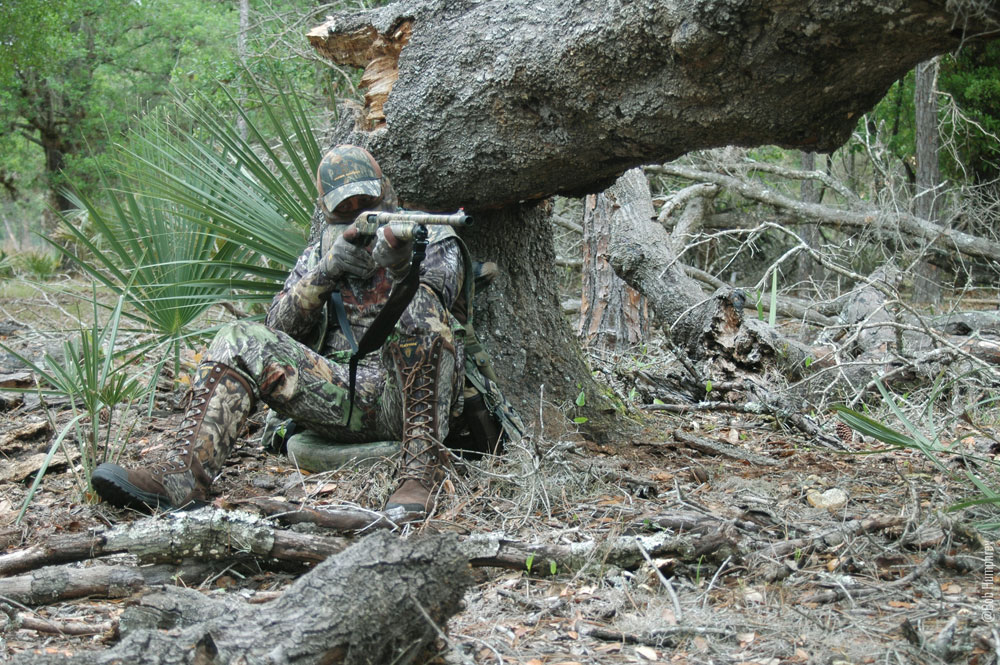
One of my more important lessons came while trolling down a power-line right-of-way one morning. It was one of my regular haunts and I knew the woods on either side often held birds, but they seemed to have developed a sudden case of lockjaw. So I opted for a run-and-gun approach, hiking down the swath and pausing at strategic locations to try and strike a bird with my box call. Still, my efforts were proving largely ineffective.
As I neared the top of a rise I paused once more, unlimbered my favorite “boat paddle” and was about to send a volley of loud yelps when I glanced down my back-trail. It was a good quarter mile back that I noticed what at first looked like a contractor’s trash bag blowing in the breeze. A quick check with binoculars showed it was Old Tom, in full strut, right where I had stopped to call some 30 minutes earlier.
Though there’s not a lot of science to quantify it, we know wild turkeys have very keen hearing. It is not so much their ability to hear, but how they use it that is most remarkable. As the previous passage points out, they have an uncanny ability not only to hear sounds, but to pinpoint the exact location of their source. I’d witnessed it before, but that day on the power-line confirmed what I subsequently observed many more times over the years; and I can aver with certainty that once a bird hears your calling, they will find your precise location, if they’re inclined to.
“IF YOU LOVE WILDLIFE AND WANT TO IMPROVE HABITAT SUBSCRIBE TODAY!”
Here, as in most turkey hunting situations, patience is the key. Most hunters nowadays, myself included, prefer a run-and-gun style of hunting. “If it’s not happening here, I’ll go some-where else and make it happen.” And it works, sometimes.
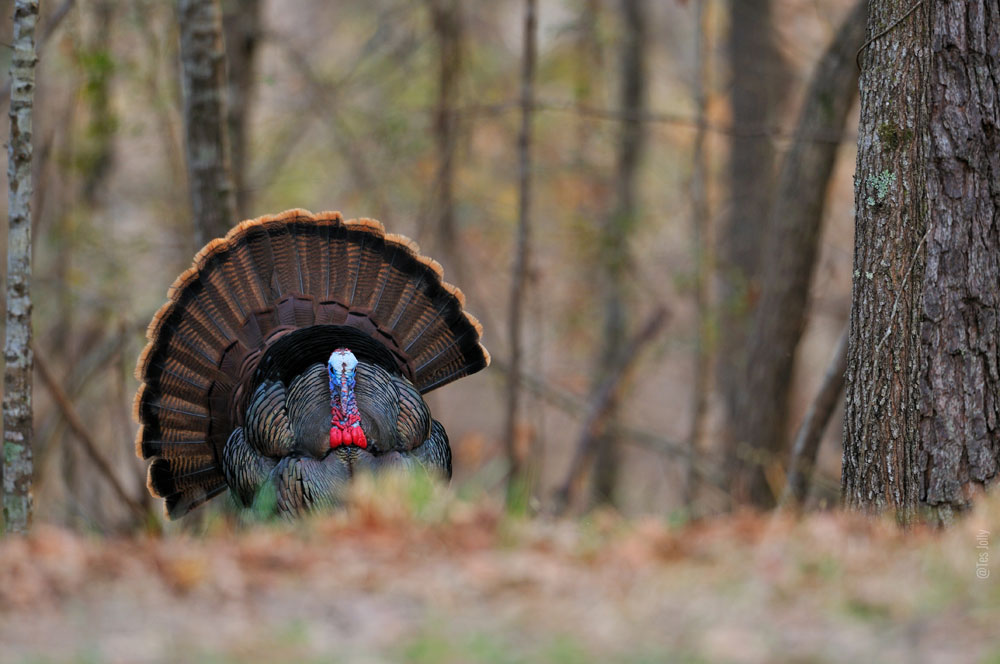
Just as often you might be better off going “old school.” Just because you don’t hear them, doesn’t mean they’re not there and that they won’t respond, even in silence. If you scouted sufficiently, you know they should be there somewhere. Sit down, yelp three times on a box call and wait a half hour, or more. Then repeat. It may not have quite the excitement of a gobbling, strutting bird marching boldly into your decoy, but if the bird does eventually slip silently into range, he’ll be just a dead.
In addition to locating the source, wild turkeys also have mastered the art of interpreting those sounds, as evidenced by their complex vocabulary. What to us sounds like little more than turkey noise represents a diverse range of messages.
Yelps, clucks and purrs all convey different messages, which can also vary with tone and inflection. Space precludes us from getting into too much detail as entire articles and even books have been written on the subject of turkey calling. Suffice to say, you’ve got to learn to speak fluent turkey by observing and listening if you want to exploit it. And that’s not even their keenest sense.
Double Vision?
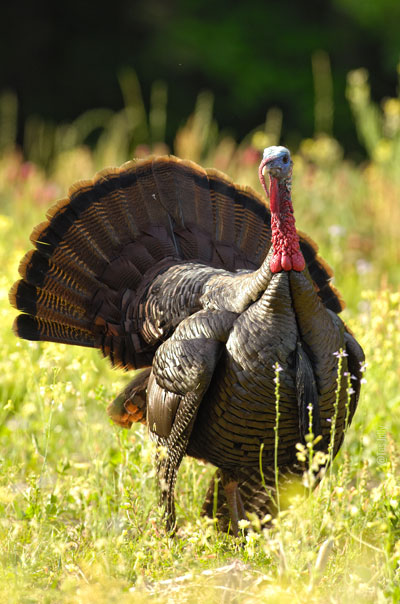
specifically on a wild turkey’s eyesight, but birds, in general,
have the most complex retina of any vertebrae. One of a
gobbler’s single cone photoreceptors has a spectral
sensitivity to wavelengths near 400nm, which is in the
ultraviolet light range.
The wild turkey’s sense of vision is legendary, as anyone who has made even the slightest movement at the wrong moment can attest. Beginning with the basics, their stationary field of vision encompasses 300 degrees, which can expand to a full 360 degrees with a slight turn of the head. So you’re not going to sneak up behind them. And while they lack the binocular vision afforded by forward facing eyes like those of predators, head movement also allows them better spatial recognition.
Surprisingly, far less research has been done on the eyesight of turkeys com-pared to that of deer. We do know that they see color, as evidenced by how they respond to changes in color of the head and neck appendages, not to mention our occasional lapses in concealing our-selves and our equipment.
According to a Scientific American article, the turkey’s retina has seven different types of photoreceptors. Unlike deer, which are crepuscular, turkeys are diurnal, meaning they’re most active during daylight. They only have one rod, which is sensitive to light and helps them see in low light, probably about as well as we do. However, they have six different types of cones, two of which are actually “double cones,” compared to only four for humans. While I could find no corroborating evidence, the article also states that one of those cones has a spectral sensitivity in the UVA light range. At the very least, that makes blue and purple very bad colors to wear while turkey hunting. It’s also advisable that you not use standard household detergents with fabric brighteners to wash your hunting clothes; and you should check them with a UV light to see if they glow.
It is not so much magnification, but the rate at which they can assimilate detail and detect movement that largely accounts for their visual acuity. These attributes have been honed over eons of avoiding predators, and because turkeys spend most of their time on the ground, those senses are even more finely tuned than in other birds.
Your first, best defense in overcoming them is good camo. That’s why patterns like Mossy Oak Obsession were designed to both, break up the human outline and blend in with the environment of spring woodlands. That means camo from head to toe, and specific attention to detail. Shiny brass grommets on leather boots or the sun glinting off a polished blued shotgun barrel could be more than enough to reveal your presence.
“BECOMING A GAMEKEEPER IS NOT JUST THE BEST WAY TO PRODUCE GREAT HUNTING… IT’S THE BEST LIFE! SUBSCRIBE TODAY.”
And you’ve got to remain as motionless as possible. If you can see them, they can see you. Often, even when you can’t, they can. Unlike humans, turkeys have no sense of urgency, and if they detect the slightest hint of danger, they will remain motionless for what can sometimes seem like an agonizingly long time. Don’t sneeze, don’t swat that mosquito, and don’t shift your weight. Even the heavy breathing and nervous shaking of an excited hunter could be enough to give you away.
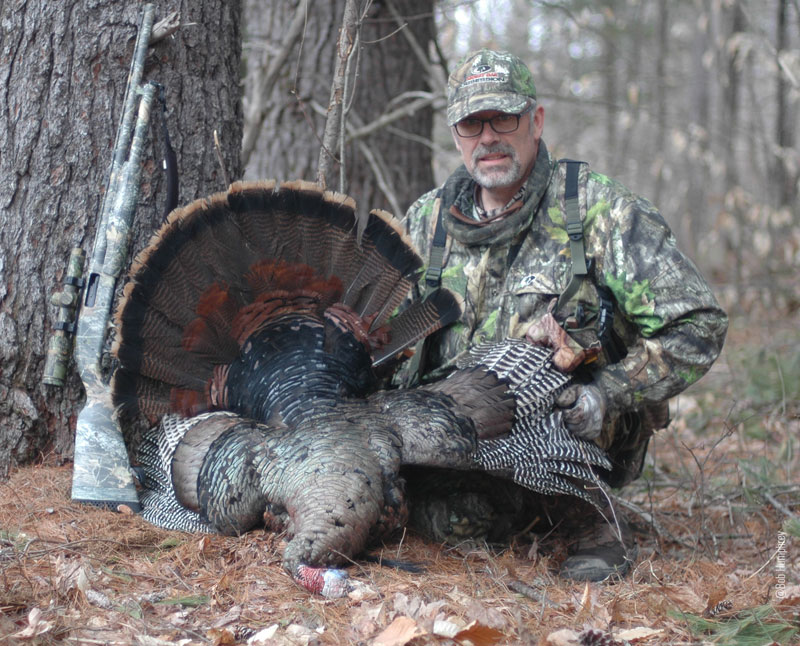
Sometimes you have no choice. While it’s probably more mere coincidence than any real deliberate attempt, turkeys also have an uncanny knack for coming in on the wrong side - the right side if you’re a right-handed shooter, and vice versa. You’ll never beat them on the draw, so a quick move into a better shooting position will almost always fail, resulting in no shot, a miss or worse, a wounded bird. If you must move, move slowly. The bird will still pick you out, but if you’re lucky, they may hesitate while trying to make sense of what they’re seeing. If you need to move and they’re in the open, move while they’re moving.
You stop when they stop. Then, wait for them to move again before continuing. Even better, if you get the chance, wait for them to pass behind a tree or until a strutting fan obscures their view.
Out on Good Behavior
“This is it,” I thought, propping my trusty 12 gauge up on my knee in anticipation of what I figured would soon be a bird in the hand. I’d struck a receptive note and though he was taking his sweet time, “old Tom” was definitely closing the distance between us. Now it was just a matter of time, now an occasional soft purr to hold his interest.
Then, as so often happens, the woods became suddenly still. I sat stoically, moving only my eyes as I scanned for my approaching victim. Long minutes passed before I caught what I thought might be the wary wild turkey, but focusing my vision on the spot, I saw no further movement. Slowly, gradually the image came into focus. What I initially thought was the stub of a broken branch materialized into a turkey head, the rest of its body safely concealed behind the bole of a big pine. The stare down continued for several more minutes before the head disappeared behind the tree. Then I heard the soft footfalls in the dry leaves as the bird slowly retreated, never revealing so much as a feather on either side of that tree.
Like my power-line lesson, I’ve observed certain turkey behaviors often enough to conclude; it’s deliberate rather than coincidental. The previous event offers two prime examples. And knowing allows adjusting.
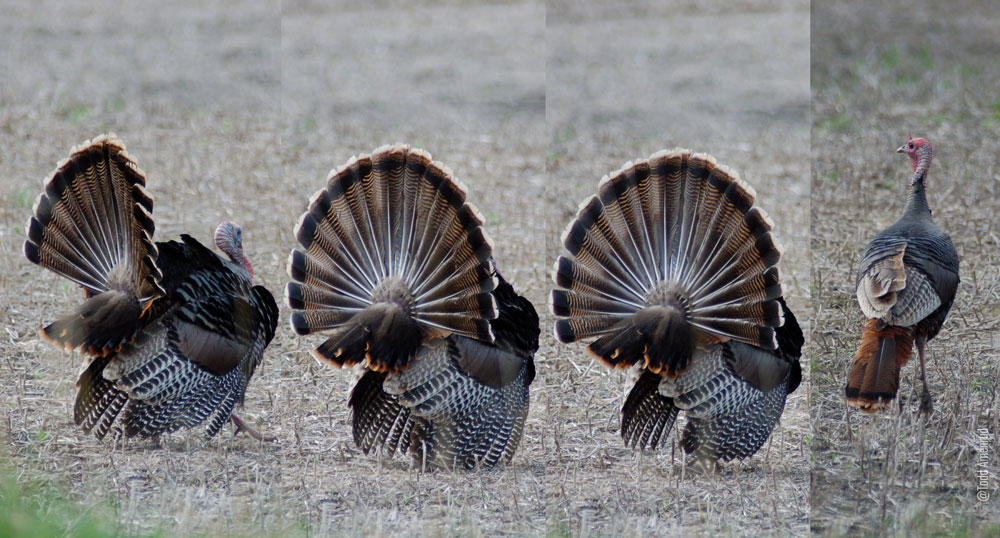
We relish those rare occasions when a randy bird roars in, gobbling all the way into bow, gun or camera range, but for some that tends to be the exception rather than the rule. Far too often, old tom shows a proclivity for going silent before closing the final distance, and I contend it’s no accident. As the power-line passage illustrates, they know precisely the point of origin for the sound they seek, but something programmed into their DNA tells them to stop short, shut up and approach cautiously. Perhaps its eons of experience wherein the calling attracted unwanted guests, like coyotes, bobcats or other potentially more dominant toms - something that could represent a threat. Whatever the reason, it can be quite unnerving, particular for the novice hunter.
Knowing this trick in the “turkey’s tool kit” (natural turkey biology) is a good first step toward overcoming it. When an approaching bird suddenly goes silent, it’s time to be extra still, and patient. There are no rules, but a good guideline is: If you think you’ve waited long enough, you haven’t. Give it another 15 or 20 minutes. If you’re sure you’ve waited long enough and the bird is not coming any closer, continue waiting, listening and especially, watching.
As related above, a tom also has a nasty habit of approaching, and hanging up behind any obstacle lying between him and you. If I had a dollar for every time an approaching bird hung up behind a brush pile, a tree trunk or the only tuft of tall grass in an otherwise neatly groomed field, I could buy myself a fancy fowling piece. Here too, your best recourse is stealth, silence and patience. Move now and the game is over.
Conclusion
Most experienced hunters are at least familiar with much of the above information, but even one more helpful hint could turn the odds slightly more in your favor. Hopefully, it will soften the learning curve for less experienced hunters. Ultimately, experience is the best teacher. Over time you’ll continue learning many valuable lessons, but as one of my turkey hunting mentors once said, “...in the school of the outdoors graduation day never arrives.”































